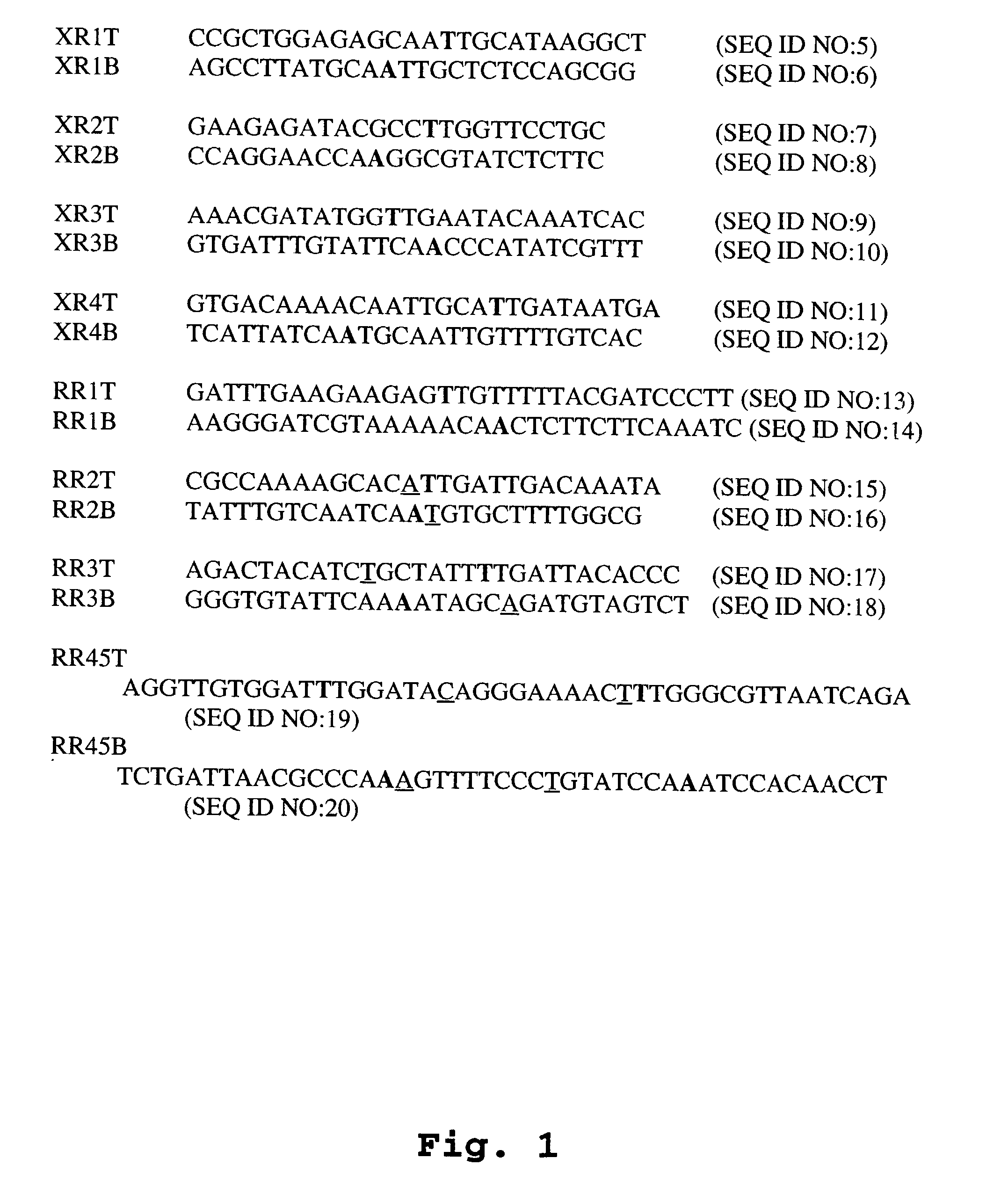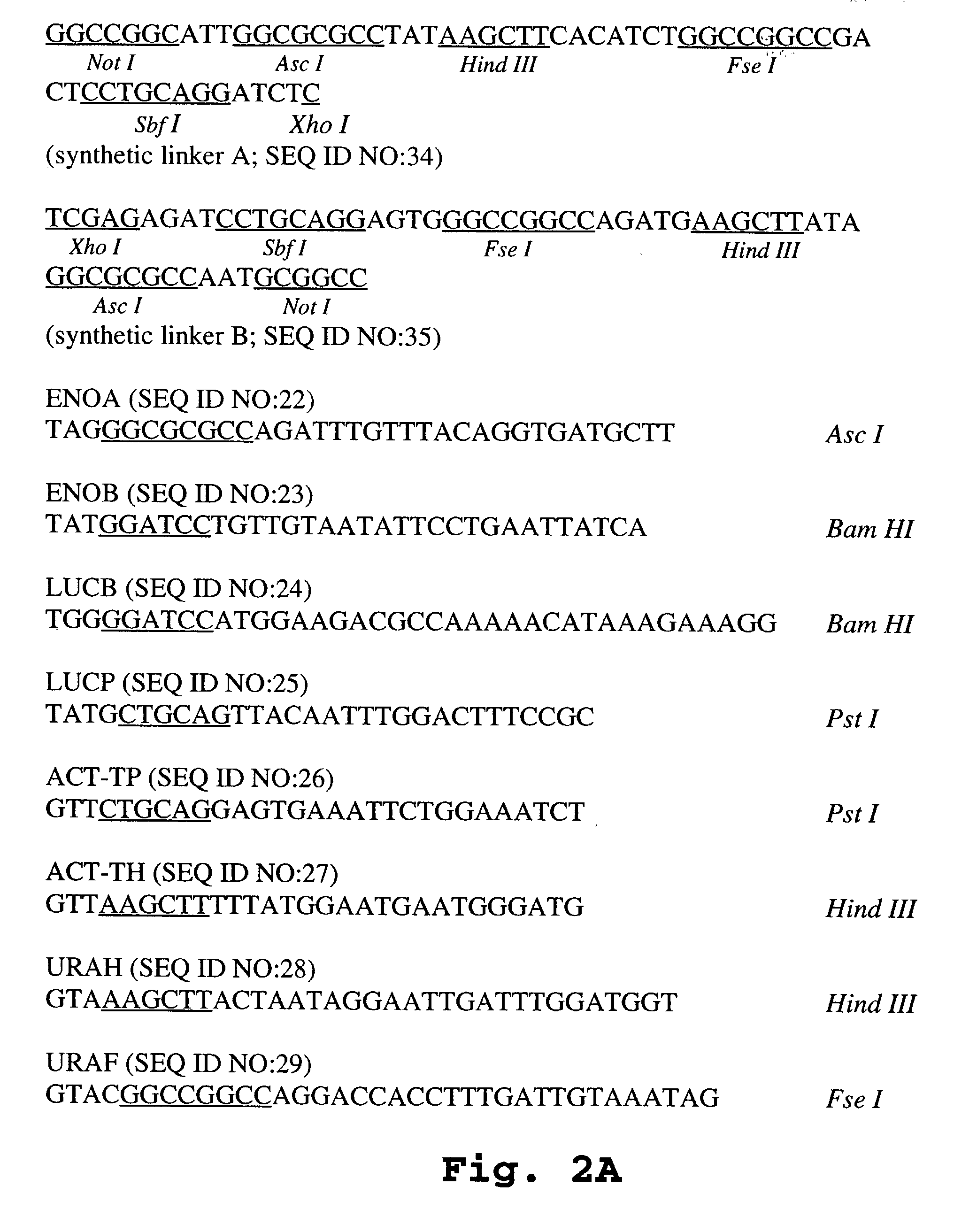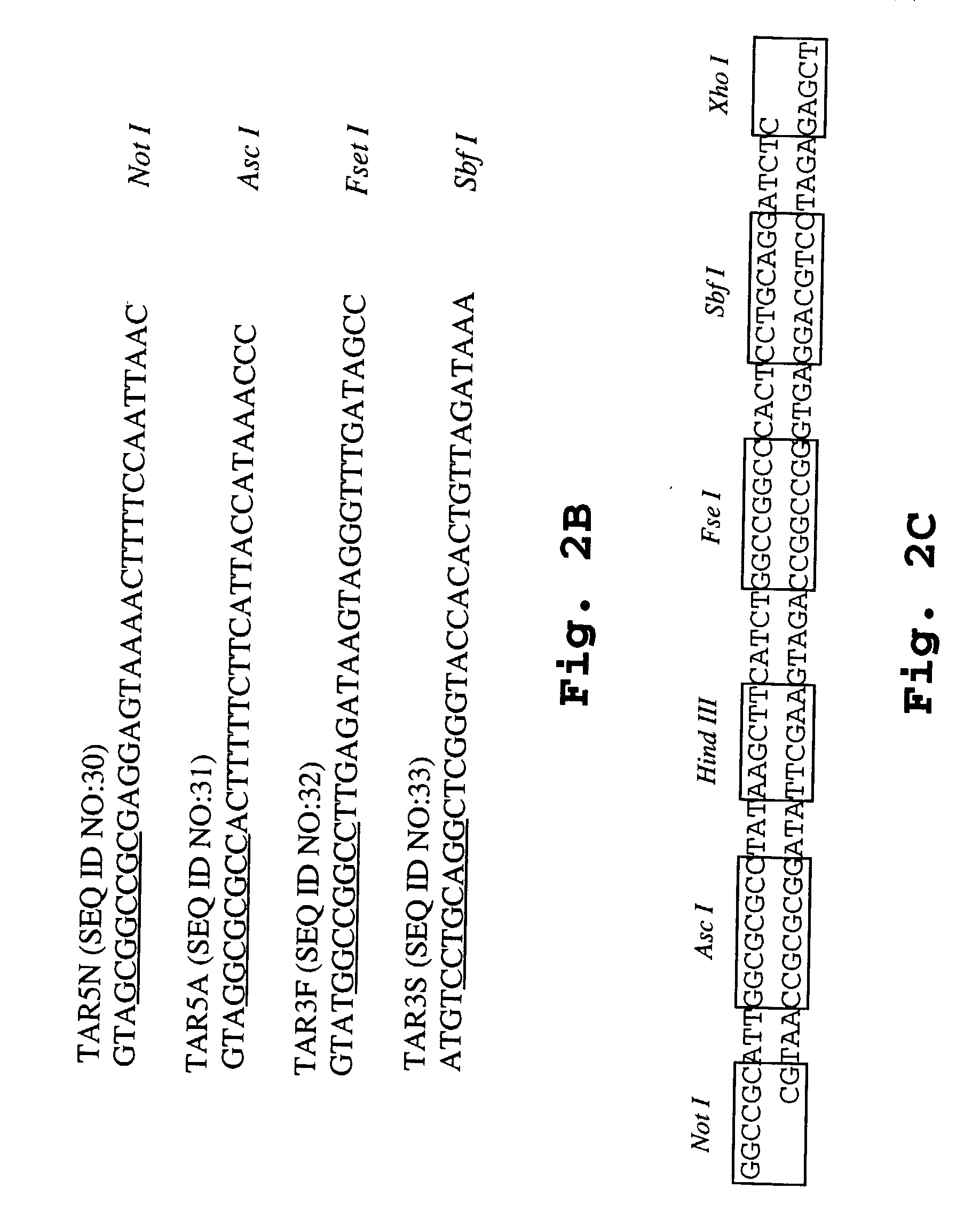Methods of screening for introduction of DNA into a target cell
- Summary
- Abstract
- Description
- Claims
- Application Information
AI Technical Summary
Benefits of technology
Problems solved by technology
Method used
Image
Examples
example 1
[0192] Construction of a Gram-Positive lux Transposon: Tn4001 luxABCDE km.sup.R
[0193] The luxABCDE kM.sup.R cassette was constructed as follows: A Gram-positive kanamycin cassette from pDL289 (Buckley, N. D., et al. (1995) J. Bacteriol. 177:5028-5034) was PCR amplified using the primers KanF2 (5'-CTG TAG ACT CGA GGA GGG AAA TAA TAA ATG GC; SEQ ID NO: 1; the bolded letters represent a XhoI site) and KanR2 (5'-CAG AGT GTC GAC AGT TGC GGA TGT AC; SEQ ID NO :2; the bolded letters represent a SalI site). Amplification was carried out for 30 heating / cooling cycles of 15 seconds at 95.degree. C., 30 seconds at 50.degree. C., and 2 minutes at 72.degree. C.
[0194] The resulting amplification product provided a promoter-less km.sup.R antibiotic resistance gene. The amplification product was then cut with XhoI / SalI and ligated into the SalI site of the pSK-luxABCDE plasmid construct (see, co-pending and co-owned application U.S. Ser. No. 09 / 657,289 for further details about plasmid construction...
example 2
[0197] Construction of Tn4001 luxABCDE km.sup.R Shuttle Vector Constructs
[0198] A. Construction of the pAUL-A Tn4001 luxABCDE km.sup.R Shuttle Vector
[0199] The Tn4001 cassette containing the lux and km.sup.R genes (designated IR luxABCDE km.sup.R tnp IR, where, IR represents inverted repeats and tnp represents the gene encoding the Tn4001 transposase) was inserted into a broad-range shuttle vector having a gram negative origin of replication and a gram positive origin of replication (either constitutive or conditional, e.g., temperature sensitive). One example of such a shuffle vector is the pAUL-A vector (Chakraborty, et al. (1992) J. Bacteriol. 174:568-574) which contains an erythromycin resistance gene that is functional in both Gram-positive and Gram-negative bacteria. This vector contains both a Gram-negative origin of replication and the temperature-sensitive pE194 Gram-positive origin of replication.
[0200] Herein the transposon cassettes of the present invention are schematic...
example 3
[0213] High-Density Screening of Bioluminescent Transposants
[0214] As an alternative to the use of selective media, bioluminescent colonies were isolated from among colonies plated at high density on solid medium using optical detection and manual isolation.
[0215] S. aureus 8325-4 cells were transformed with pE194 Tn4001 luxABCDE, plated on solid non-selective media plates at a density of 10.sup.4 to 10.sup.5 cells per plate, and grown overnight at 37.degree. C. Strongly bioluminescent single colonies were detected using an ICCD camera, and those colonies were picked using a disposable micropipette tip; the light producing phenotype of the desired colony was confirmed using the camera. The colony was used to inoculate a volume of liquid growth medium, which was then streaked onto fresh media plates. The plates were incubated overnight at 37.degree. C. The process was repeated until isolation of a pure colony was confirmed by observation of essentially uniform light intensity among s...
PUM
| Property | Measurement | Unit |
|---|---|---|
| Temperature | aaaaa | aaaaa |
| Length | aaaaa | aaaaa |
| Length | aaaaa | aaaaa |
Abstract
Description
Claims
Application Information
 Login to View More
Login to View More - R&D
- Intellectual Property
- Life Sciences
- Materials
- Tech Scout
- Unparalleled Data Quality
- Higher Quality Content
- 60% Fewer Hallucinations
Browse by: Latest US Patents, China's latest patents, Technical Efficacy Thesaurus, Application Domain, Technology Topic, Popular Technical Reports.
© 2025 PatSnap. All rights reserved.Legal|Privacy policy|Modern Slavery Act Transparency Statement|Sitemap|About US| Contact US: help@patsnap.com



